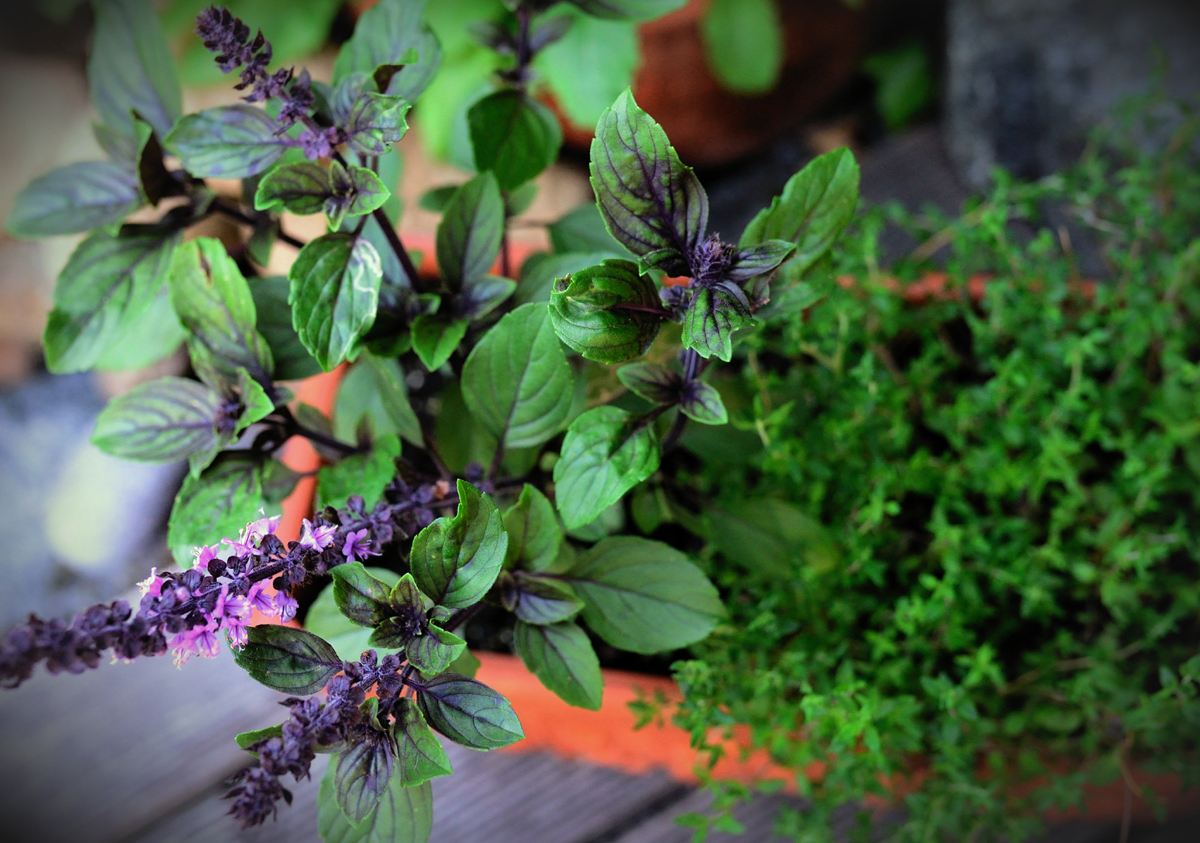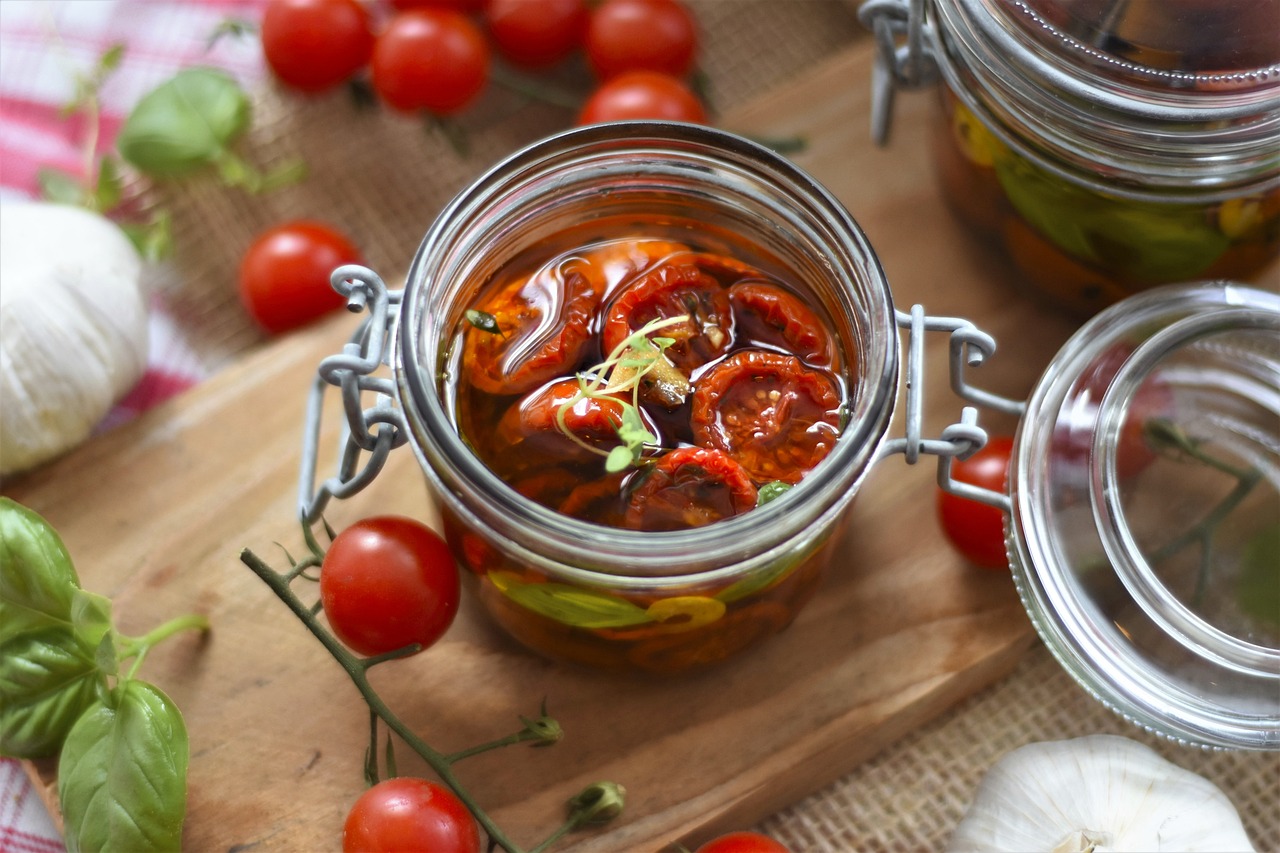Basil – History, Cooking, and How to Save for Year Round Use

Basil (Ocimum basilicum) is a popular aromatic culinary herb that is used quite frequently in Italian and Southeast Asian cuisines. Sweet basil is typically used in Italian dishes while Thai basil, lemon basil, or holy basil are used in the Southeast Asian dishes of Taiwan, Thailand, Vietnam, Cambodia, and Laos. Originally native to India and Africa, there are now 50 to 150 estimated species of basil. Basil has been cultivated for more than 5,000 years in regions of India and other parts of Asia.
The word basil comes from the Greek word meaning king. It is believed to have grown at the spot where the Holy Cross was discovered by St. Constantine and Helen. To this day, many cooks and authors believe that basil is the King of herbs.
Basil has a very unique and pungent smell and taste. It can be best described as having a subtle peppery and earthy taste with a slight hint of sweetness, like that of licorice.
While basil grows best outdoors in direct sunlight and hot and dry weather, it can also be grown indoors if placed on a south facing window or by using an artificial lamp. Growing indoors makes it possible to enjoy fresh basil all year long, even if the weather outside is horrible.
When fully mature, a basil plant will usually be between one and four feet tall. The silky, green basil leaves will measure from one to four inches long and a half an inch to 3 inches wide.
Cooking with Basil
After picking fresh basil, cooking options are almost unlimited. Basil is often added to pizza, chicken, pasta, sandwiches, salads, eggs, and fresh fruit. It can also be added to vinegar, oil, jam, and sauces such as pesto. When cooking, basil is often added to a dish at the last possible moment to preserve the flavor. When added too early, heat can greatly destroy the flavor of the basil.
Freezing or Drying Basil for Year Round Use
Extra basil that does not need to be used right away can be frozen or dried for future use. When freezing basil, first blanch or boil the basil for a few seconds in boiling water. Next, drop it in ice water to stop it from cooking. Finally, dry the basil and place it in an airtight container or zip lock bag and place in freezer. A coat of extra virgin olive oil can help keep frozen basil from turning dark while in the freezer. To dry basil, hang the basil stems and leaves in a dark and well ventilated room for about a week. When the leaves are dry, simply crumble them in to small pieces, and place in an airtight container or tin, and store in a cool dry place out of the sun.
Basil and Pesto
One of the most well known sauces made from using basil is pesto. Pesto, originating from Northern Italy, is a sauce historically made with basil leaves, olive oil, garlic, salt, and pine nuts. The sauce, prepared and used by the ancient Romans thousands of years ago, was not made popular in North America until the late 1980s and early 1990s.
The Author:
For more information about basil: howtogrowbasil.com/what-is-basil








